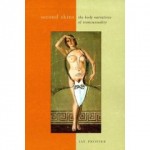What is the difference between being in trouble (the verb: to be) and a being in trouble (the noun: a being)? In Judith Butler’s arguments for pushing at the limits of our most sure ways of knowing, she often focuses on characters (like Antigone or David Reimer or Venus Xtravaganza) who embody those limits and who serve as allegories (figures/symbols) for those limits in crisis. For Butler, critically exploring these limit cases can disrupt any easy reading of them and can generate important conversations about how norms are constructed in ways that “produce, reproduce, deproduce” what counts as “human” and/or a livable life.
But, what is at stake for those folks who live at the limits when they are held up as productive examples for being in (and making) trouble? Should they function as the main characters for our narrative/s about how to make and be in trouble? If so, how might our understanding of their lives be reduced to how they allegorize/symbolize/demonstrate the limits of discourse?
 In my Queering Theory class, we read Jay Prosser’s critique of Judith Butler (in Second Skins) last week. Prosser writes about Butler’s discussion of Venus Xtravaganza, a Latina transsexual (Prosser’s description) in the documentary Paris is Burning. He argues that Butler envisions Venus’ tragic death (presumably killed because of her failure to fully pass as a real woman) as central to her argument for drag as ambivalent (and potentially, but not definitively, subversive and transgressive). I was particularly struck by Prosser’s statement on page 275:
In my Queering Theory class, we read Jay Prosser’s critique of Judith Butler (in Second Skins) last week. Prosser writes about Butler’s discussion of Venus Xtravaganza, a Latina transsexual (Prosser’s description) in the documentary Paris is Burning. He argues that Butler envisions Venus’ tragic death (presumably killed because of her failure to fully pass as a real woman) as central to her argument for drag as ambivalent (and potentially, but not definitively, subversive and transgressive). I was particularly struck by Prosser’s statement on page 275:
Butler’s essay locates transgressive value in that which makes the subject’s real life most unsafe.
The problem here, according to Prosser, is that using beings who are in trouble as the location where new queer theories can be produced often fails to take into consideration how the actual bodies of those beings in trouble experience and precariously inhabit those troubled positions. While I don’t agree with Prosser’s assessment of Butler, I do think that focusing on beings in trouble (as a location for critique, source for new knowledge, an object of and raw material for new theories) can be problematic. Maybe we should distinguish between being in trouble which focuses on actions of making trouble and beings in trouble which focuses on persons who embody troubled/troubling positions. How could queering theory be understand and produced differently if we emphasized the former instead of the latter?

Comments are closed.